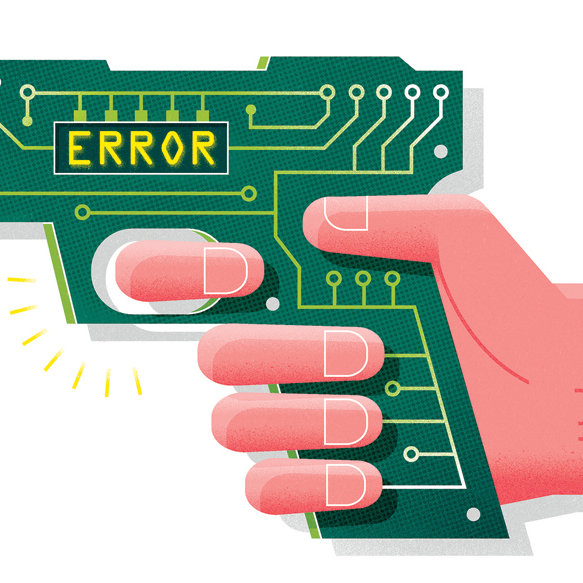Bob Owens has an excellent open letter to an ignorant reporter about Smart Guns over at Bearing Arms. I hate to specifically single Bob out for this, because I’ve heard it a lot, but I want to put my engineer hat on for a second and comment on this one bit:
I explained that the technology used in the [Armatix iP1] pistol is so fragile that anything stronger than chambering anything more a low-recoiling .22LR would shake the gun’s electronic brains apart in short order.
There’s actually no fundamental reason you can’t make electronics that can stand up to the shock of a firing pistol and make them reasonably cheaply. After all, a laser and its driver are electronic components, and they stand up just fine. If we can put GPS guidance into artillery shells, we can make reasonably priced electronic components that can stand up to the shock of small arms recoil. I suspect the reason the Armatix is a .22 is that it was designed by Europeans who don’t think of self-defense as the primary reason for gun ownership. It’s also much easier to design a .22LR chambered pistol than a more substantial caliber, where you move away from simple blowback operation. I suspect Armatix don’t have a lot of institutional experience with firearms design.
The problem with smart guns are more fundamental than the shock sensitivity of electronics, and have more to do with the limits of biometric identification and radio frequency identification (RFID). The former is unreliable and slow, and the latter is prone to interference and jamming. There’s also inherent mechanical problems with the smart gun that make the technology very easy for a determined individual to defeat. I had a conversation with some of our opponents on this topic, who argued that automobile anti-theft systems became much more sophisticated, but aside from misunderstanding the problem, I thought it was a reasonable point.
But while it’s true you can’t just hot wire a car these days, the reason you can’t is because automobiles today all have electronic ignitions. In order to make a smart gun that is not easily defeated, guns would also need evolve away from chemo-mechanical ignition to electronic ignition. Now, manufacturers have done electronic ignition firearms, but they haven’t exactly torn up the market. I don’t believe Remington even makes the Etronx line of 700s anymore, and the idea can charitably be called a market failure. It was, to borrow a phrase from Tam, an answer to a question that nobody asked. The Etronx 700s take a specialized and expensive primer, and I don’t know about you, but I’d like to know how susceptible those primers are to electrostatic discharge before I would trust them in a self-defense gun. I’ve also read that the Etronx ignition system was not a paragon of reliability.
But even with electronic ignition, you just move from a simple mechanical hack to a firmware hack to disable the smart features. The difference between a gun and a car is that a thief can’t easily take the car with him to fiddle with the security features. A car thief has to be able to act before someone notices, whereas a gun thief has all the time in the world. Hacking automotive firmware is a hobby among car enthusiasts these days, and there’s no reason it wouldn’t be so for guns.
Additionally, when it comes to electronic-ignition firearms, I’m sure our opponents would positively love semi-automatic firearms that could be converted to fully automatic with a firmware hack, which would beg the question as to whether semi-automatics with electronic ignition were “readily convertible” and thus Title II firearms out of the gate. It would certainly be a novel theory that could be used to prosecute some unlucky bastard. If you’re going to make a smart electronic ignition system, then certainly detecting an out-of-battery condition is an obvious safety feature. You can see how this then becomes very easy.
The antis really have no idea what kind of can of worms they are opening. They don’t much care because their interest in smart guns only goes as far as making guns more difficult and expensive to own, while simultaneously lowering the value proposition of gun ownership. If the technology actually worked, you’d quickly see interest disappear as it became apparent it was not only easy to circumvent, but could open a whole world of new possibilities for people intent on disregarding the law.




